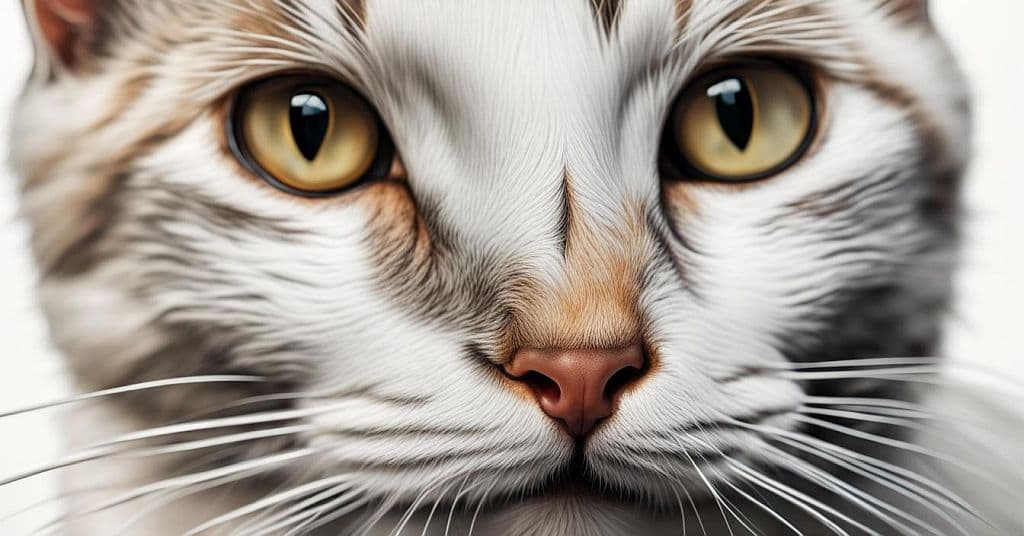 The domestic cat’s ancestor was likely a small, nocturnal, and solitary hunter.
The domestic cat’s ancestor was likely a small, nocturnal, and solitary hunter.
Slitted Pupils #
What is the evolutionary advantage of slitted pupils? #
The evolutionary advantage of slitted pupils, predominantly seen in some predators, notably cats, and in certain prey animals, is a fascinating adaptation that serves multiple functions rooted in the ecological niches and behavioral patterns of these animals. This feature is a result of evolutionary pressures that have shaped their visual systems for optimal performance in their respective environments.
Ambient Light Adaptation: Slitted pupils offer a wider range of pupil dilation and constriction compared to round pupils. This allows for more precise control of the amount of light entering the eye. In predators like domestic cats, which are crepuscular (most active during dawn and dusk), this ability enables them to see well in both bright daylight and low-light conditions. The slit can close more tightly than a round pupil, which is beneficial in bright light, and can open widely in the dark to allow more light in.
Depth of Field and Focus: Slitted pupils, particularly vertical slits, are believed to provide an enhanced depth of field. This means that animals with such pupils can keep a larger area of their vision in focus at one time, which is crucial for predators that need to judge distances accurately when pouncing on prey. It may also be beneficial for some prey species in detecting predators from various angles.
Camouflage and Stealth: For ambush predators, slitted pupils can offer a stealth advantage. Narrow pupils reduce the reflection of light from the eyes, which can be a giveaway of the predator’s presence. This is especially pertinent in species that hunt or evade predators in open daylight.
Speed of Pupil Response: Slitted pupils can change size faster than round pupils. This rapid adjustment is critical in fast-changing light conditions, providing a quick response to sudden exposure to light, which is common in environments with dappled light, like forests or underwater.
Territorial and Social Signaling: In some species, pupil shape can also be a form of non-verbal communication. The change in pupil size or shape can signal emotional states to others of the same species, aiding in social interactions or territorial displays.
It’s important to note that these advantages are not universal for all animals with slitted pupils. The specific evolutionary pressures and advantages can vary greatly depending on the species’ ecological niche, behavior, and environment. This is a prime example of how evolutionary processes can lead to convergent evolution, where unrelated species develop similar features due to analogous environmental pressures and demands.
How do we explain that cats are the only species within the feline genus with slitted pupils? They should not be ‘related’ to reptiles, right? #
The presence of slitted pupils in domestic cats, but not in other members of the feline genus, indeed raises interesting questions about evolutionary development and specialization. This distinction is not related to a direct evolutionary link to reptiles, but rather to specific evolutionary pressures and adaptations that have occurred within the Felidae family.
Niche Specialization: Each species evolves adaptations that are most suitable for its specific ecological niche. Domestic cats (Felis catus) are unique in their evolutionary path, diverging in behavior and physiology from other big cats like lions, tigers, or leopards. The domestic cat’s ancestor was likely a small, nocturnal, and solitary hunter, primarily active during twilight hours (crepuscular). This lifestyle demanded specific adaptations for low-light environments, leading to the development of slitted pupils.
Predation Style and Prey Detection: The predation style of smaller cats, like the domestic cat, involves stalking and pouncing, often in varied lighting conditions. Slitted pupils provide a more precise control of light intake and depth perception, advantageous in this kind of hunting. Larger cats, like lions or tigers, who hunt in different conditions, do not have the same requirement for this level of light control and depth perception finesse.
Ancestral Traits and Evolutionary Pressures: The evolution of eye morphology in cats can be influenced by ancestral traits and the specific evolutionary pressures they faced. While all felines share a common ancestor, the divergence of species within the genus led to different adaptations. The development of slitted pupils in domestic cats can be seen as an instance of species-specific adaptation.
Physiological Constraints and Trade-offs: Evolution often works through trade-offs. The development of certain features like slitted pupils may have come at the expense of other features that were less critical for survival in the specific environment of domestic cats. For larger felines, whose hunting and living conditions differed, the evolutionary trade-offs would have led to different ocular adaptations.
In summary, the presence of slitted pupils in domestic cats, as opposed to other feline species, is a result of their unique evolutionary path and specialization. It reflects the distinct ecological niches and hunting behaviors within the feline family, rather than a direct relation to reptilian ancestors. Evolution often results in such diversity within a genus, as different species adapt to their specific environments and lifestyles.